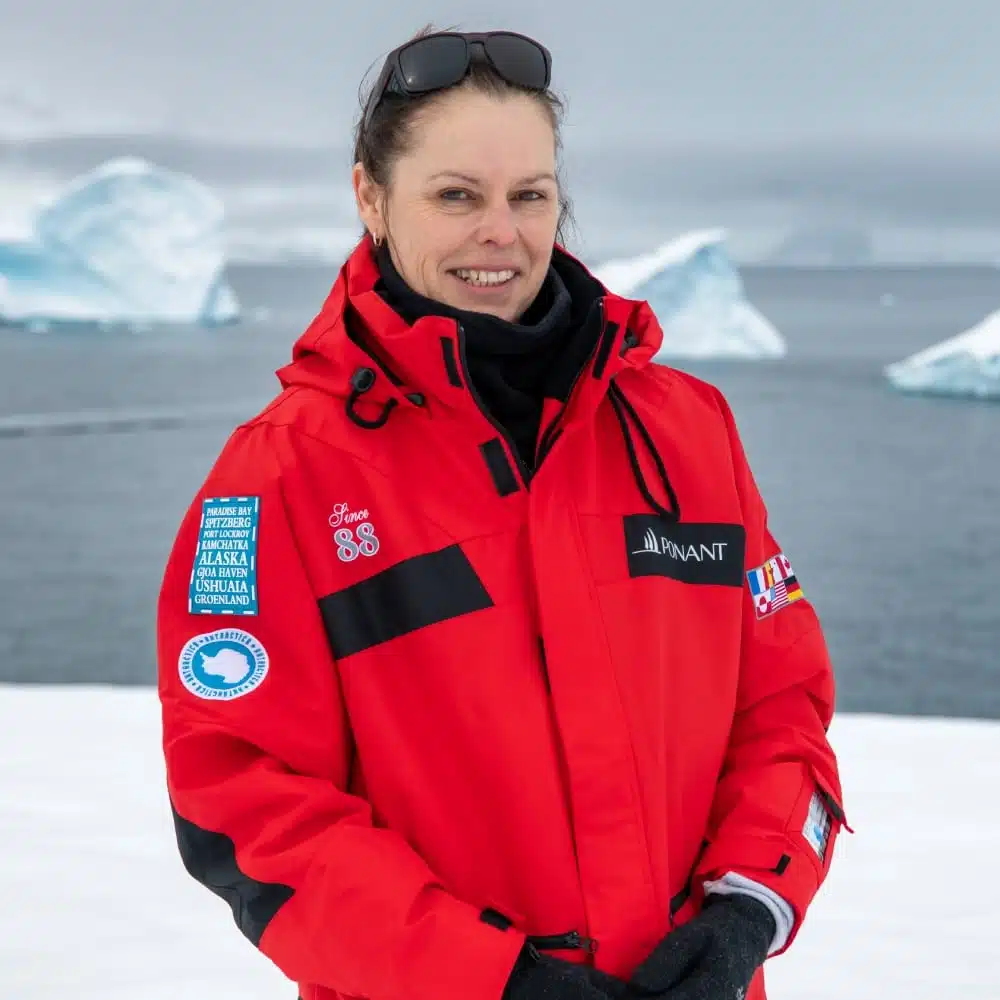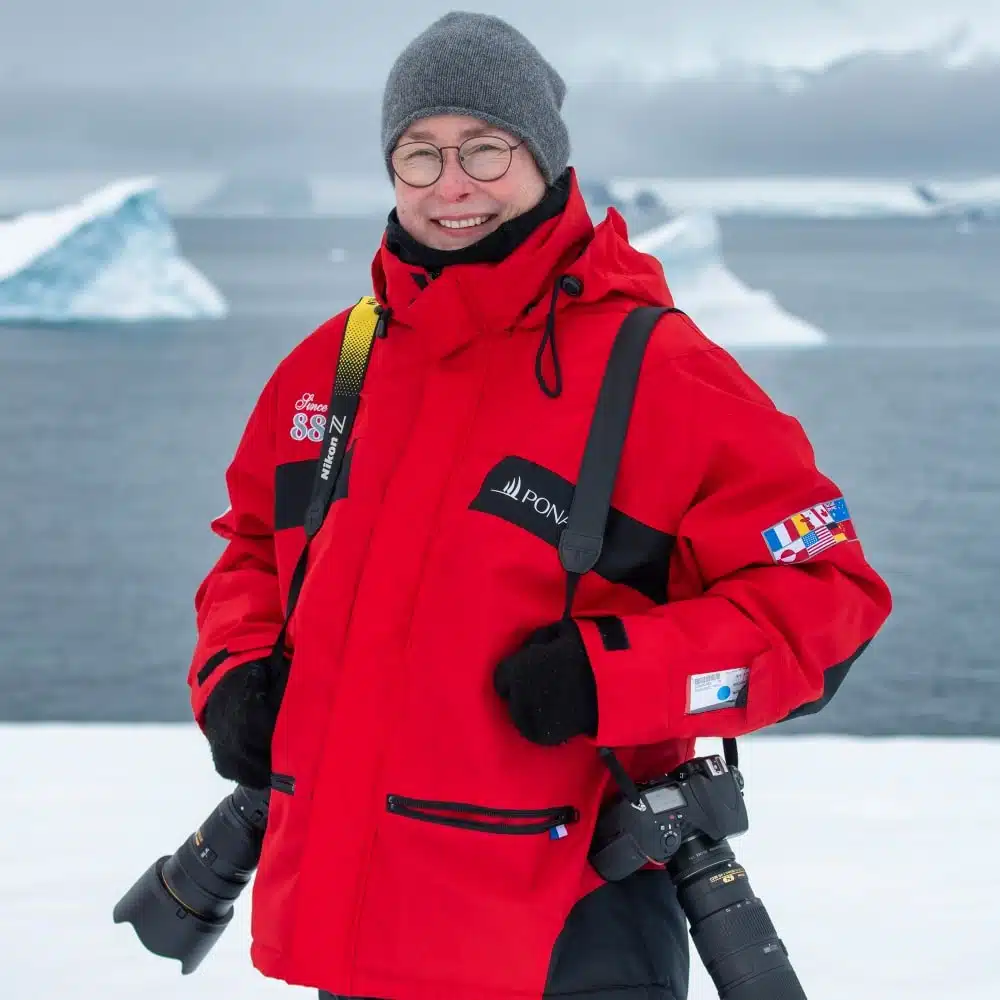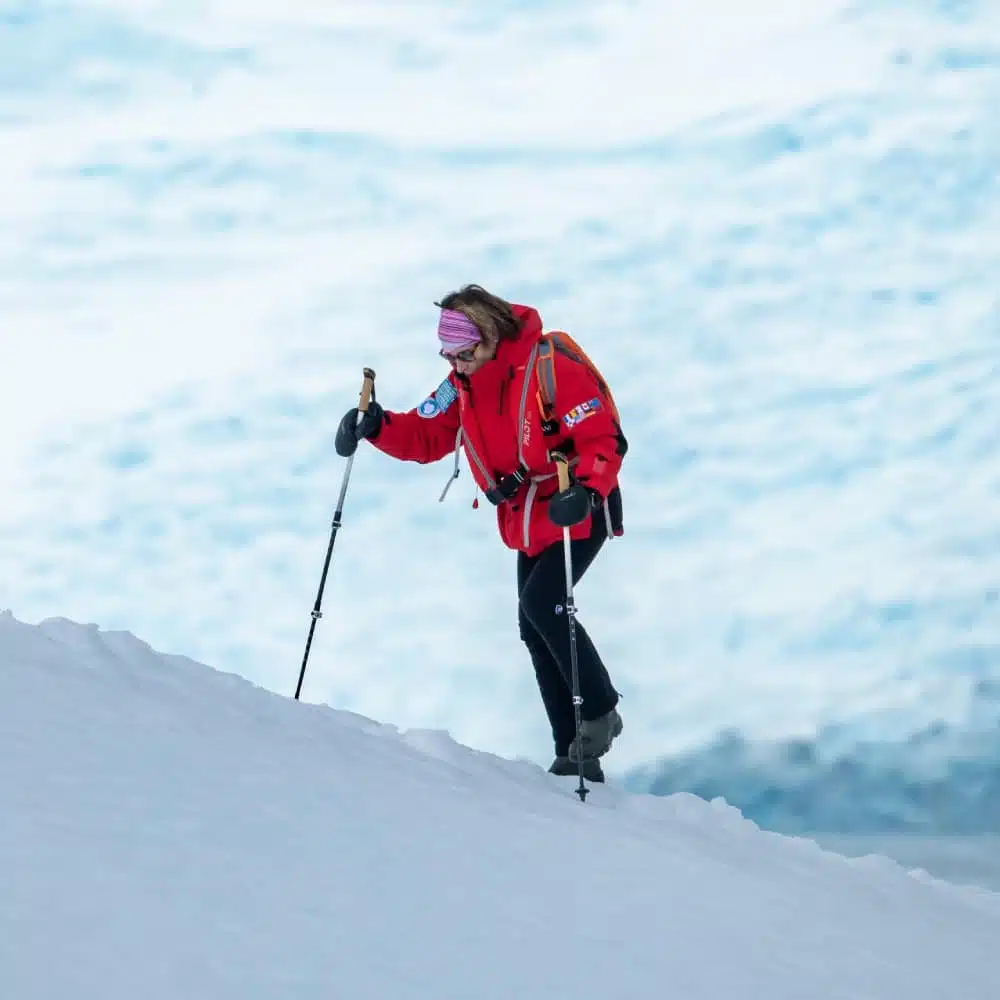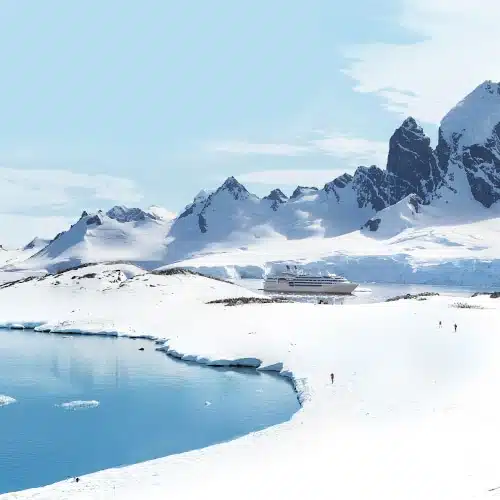Interview with Laurence de la Ferrière, Tiina Itkonen and Kate Leeming
French alpinist and explorer Laurence de la Ferrière, Finnish photographer Tiina Itkonen and Australian extreme cyclist Kate Leeming are three female explorers with exceptional careers and extraordinary achievements. In February 2023, as part of Le Cercle Polaire’s Women of the Poles campaign, they set sail aboard the L’Austral for a PONANT cruise between Tierra del Fuego and the Antarctic Peninsula. It was an opportunity for these three ambassadors to share their experiences.
Could you tell us about your career and your greatest expeditions?
Laurence de la Ferrière: I discovered the world of mountains by chance at 18. At the time, it was very difficult for a woman to participate in an expedition to the Himalayas, so I had to fight to get myself accepted. After some soul-searching, I decided to come down from the mountains to set off alone into the world’s largest desert… Antarctica. I never imagined that one day I would become a polar explorer: it was a series of expeditions that led me, one day, to cross the Antarctic.
Tiina Itkonen: I travelled to Greenland for the first time in 1995, where I fell in love with its nature and people. Since then, I’ve regularly visited to photograph the polar landscapes and the daily lives of its inhabitants. I’ve travelled over 1,500 km by dog sledge, fishing boats and helicopters along the coast of Greenland.
Kate Leeming: I explore the world on my bike. I’m the first woman to have cycled across Russia. I also completed an expedition covering more than 25,000 kilometres across the whole of Australia.
To date, I’ve covered a distance equivalent to more than twice the world’s circumference.

What’s your biggest challenge as an explorer? Which of your adventures are you most proud of?
LdlF: Without a doubt, my solo crossing of the most inaccessible part of Antarctica, covering almost 3,000 km between the South Pole and the Dumont d’Urville base. I was plunged into the unknown, torn between two feelings: the fear of the cold, wind, crevasses, solitude and more and the exhilaration of being able to set foot where no one had ever set foot before. It’s an incredible feeling. I had to learn to make my own way in a world that didn’t want me.
TI: My first challenge was managing to combine motherhood with my long trips to Greenland. Otherwise, my greatest adventure was my recent photo project with Inuit hunters, focusing on their daily lives, livelihoods and the effect of climate change on their lifestyles. I followed hunters across the seas of ice on dog sledges, sometimes for several days. My fingers and toes quickly froze, but I survived!
KL: Mine was probably my expedition crossing Africa from west to east, from Senegal to Somalia. It was a first and an adventure that changed my life by giving me a better understanding of how to fit into this world. I’m now preparing for the biggest challenge of my life: the first crossing of Antarctica by bike. I’m still utterly unfamiliar with this territory, but I’ve already done a lot of training for it. I’ll cross Greenland, Canada, Iceland and Svalbard, all the way to Queen Maud Land in Antarctica.

How have you seen women’s involvement in polar exploration evolve?
TI: Although polar exploration used to be the exclusive domain of men, I’m delighted to see that an increasing number of women are now embarking on this adventure. It’s definitely a significant change, which happened around 10 or 20 years ago.
KL: Yes, it’s clearly changing. Today, many women have achieved extraordinary feats, proving their physical and mental abilities to cope with these challenging environments. And I’m convinced that there are still many things for women to achieve and places to explore.
LdlF: Surprisingly, women are now relatively well represented in polar exploration. At least compared to what I’ve seen in the Himalayas, where exploration is still very male-dominated… At the poles, regardless of sex, we’re all just as ‘crazy’ as each other for daring to go there. At any rate, I felt accepted not as a woman but as a human being who had the right to express themselves in this environment. I see Antarctica as a huge mirror reflecting the reality of human existence, a symbol of a better world, especially for women.

Why was it important for you to take part in the Women of the Poles campaign aboard PONANT’s ship?
LdlF: It was an opportunity to talk about Antarctica as a woman. And I think there’s an intelligent way of approaching this region from both a human and environmental point of view. The Women of the Poles campaign is part of this. It’s the best way to raise awareness of the issue.
TI: I was very honoured to have been invited to join the campaign. Being among these women adventurers, scientists, anthropologists and photographers was an absolute pleasure. I love sharing my experiences at the poles, talking about everyday life in Greenland and raising awareness of this environment and climate change. Maybe my experience will inspire other women to follow their dreams too.
KL: Firstly, it was a fantastic opportunity for me to explore the Antarctic Peninsula, somewhere I’d never been before. A way of learning more. Secondly, it was an opportunity to meet other people who are just as inspired by these extreme lands, to share ideas with them and perhaps help them see the world a little differently.

What message would you like to pass on to young women explorers?
TI: Follow your heart!
LdlF: Be daring! Dare to make the impossible possible. It’s by being daring that we can bring out all our potential.
KL: Polar expeditions are undoubtedly some of the most challenging adventures in the world. If women can succeed there as explorers, it sets a great example for everyone. Not just for women but for men too. It’s a way of recognising our strengths as well as our weaknesses, confronting and overcoming them.
Photo credits : ©Studio PONANT-Olivier Blaud

PONANT takes you there
Be captivated by the magic of the poles



